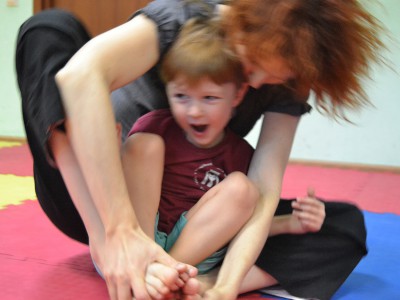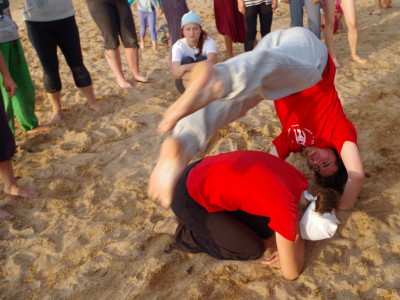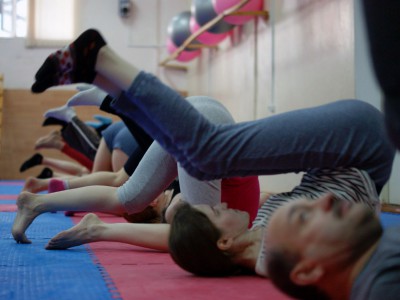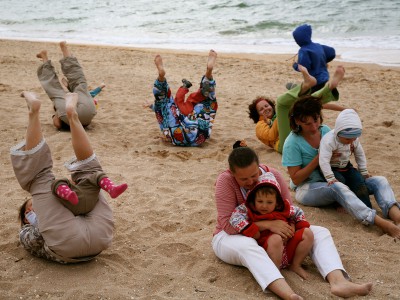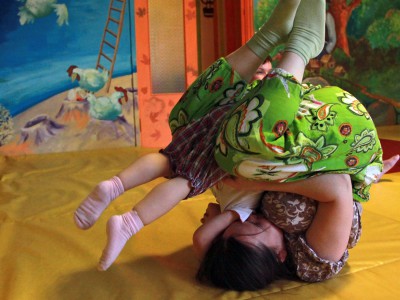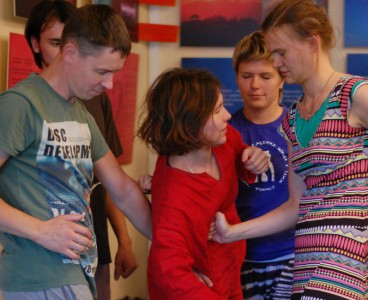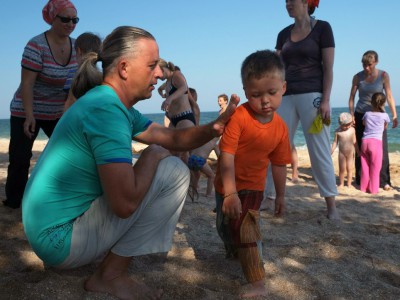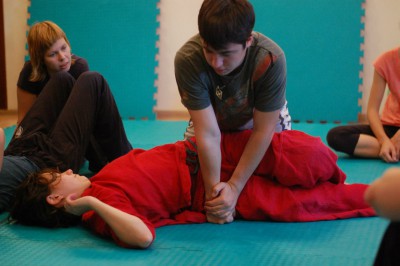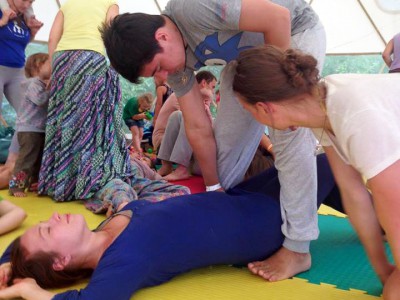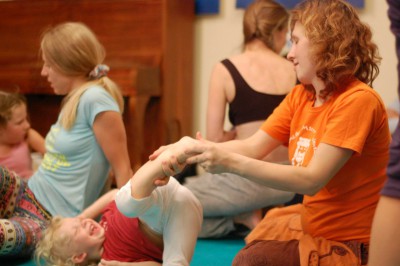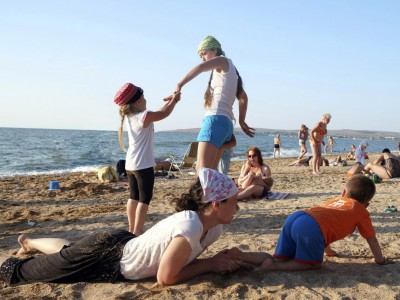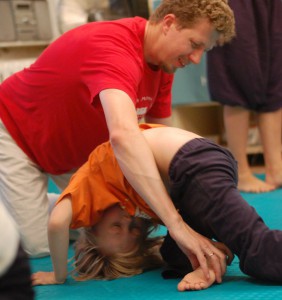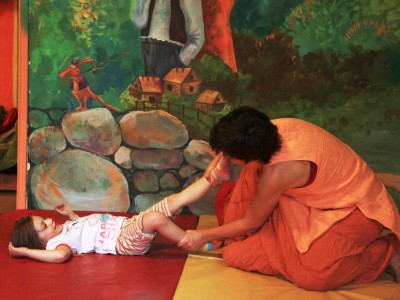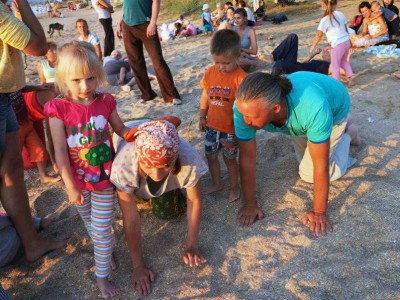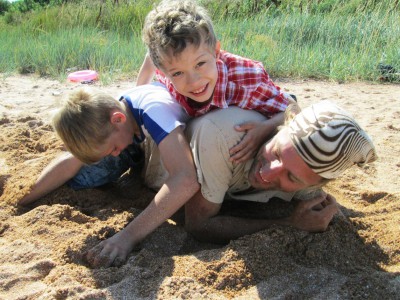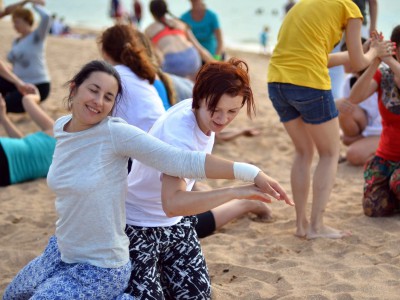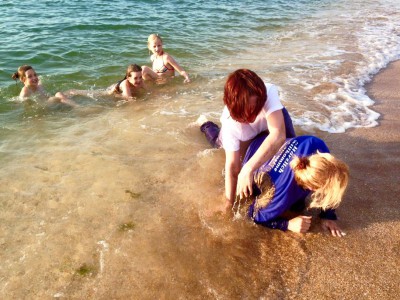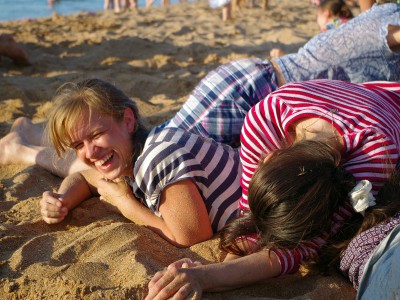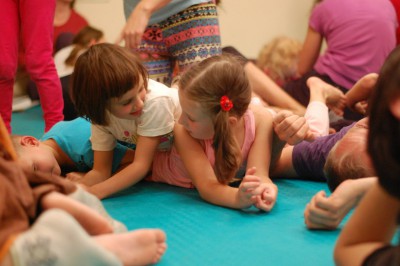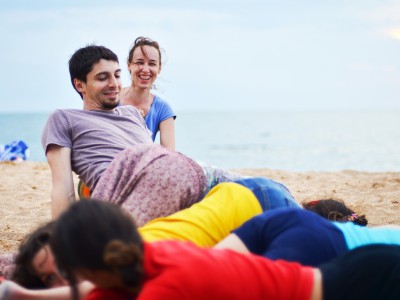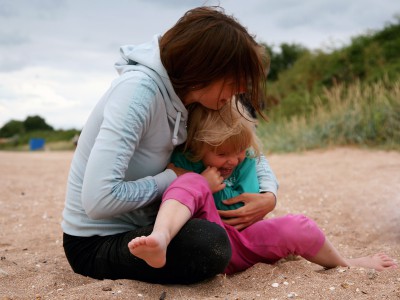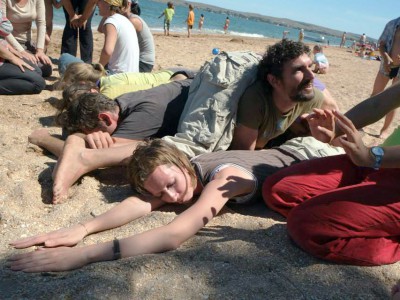Here are our basic methods:
FSS sees a person as an undividable whole. The heart of our method can best be expressed with the acronym SCC.
Squeezes: We must first love and then teach. Through these squeezes and hugs, we are physically praising our children, helping them understand and love themselves. Squeezes help restore and develop neural connections that are vital for many children’s healthy development.
Creativity: Our personalized, situational, and sensitive approach makes it so that we are constantly searching for new challenges and solutions.
Challenges: Instead of avoiding challenges, we move towards them. This can be a difficult process, but we make ourselves comfortable throughout it. We learn to solve any challenges with interest and joy.
Collectively, with our families, we gradually and joyfully learn and grow together.

The strength of the FSS lies in its availability and simplicity. This is achieved through our use of games and physical puzzles. One cannot simply achieve philosophical and spiritual peace. We have to act, move, and make decisions. Otherwise we experience discomfort, inconvenience, or even physical pain.
However, our game setting avoids these problems and makes solving them fun and easy. A person’s sensitivity increases so much that after some time they are able to comfortably solve their own real life obstacles. Parents often report back that the program caused incredible changes within them and their children. Before they enrolled in our program, some of our participants didn’t know the sources of their problems. Our situational approach fixed this by using spontaneous activities to pull out relevant moments from their lives. Thus, we were able to help them understand the causes of their generated blocks or complexes. For example, going through various difficult, but feasible situations can help a person learn new ways to interact with themselves and others. It can also help them hear their inner self and teach them to solve complex challenges. We must remember that our need to self-develop and grow is innate.
FSS' main tool is its use of physical exercise. More specifically, our exercise is designed around the concept of dynamic relaxation. These exercises are conditionally divided into five groups. There are variations and combinations for adults and children. The incredible range of our playing options makes it possible for us to diversify our activities and pay attention to all sides of our personalities.
Acrobatics
When your body is relaxed
it will not experience trauma or pain.
This group of exercises is aimed at developing an ability to fall gently or turn a fall into an unsupported somersault on any surface in any position. It is aimed at developing an ability to stay alive and healthy in an unexpected fall-based situation. Have you noticed that children love rolling around and falling? That is how they train! It’s fun for them. You have a choice between banning them from doing so or learning from them. You need to set aside your own fears and concerns over your children’s clean clothing and possible injuries. Children do this all the time, with incredible ease. Their falls and rolls are harmonious and gentle. When they practice these exercises regularly, their movements stop being stiff, they overcome their internal barriers, and they maximize their natural motor skills. They learn to be soft, relaxed, spontaneous, and carefree. This excellence and lack of physical constraint come from regular first-hand practice. Their state of peace, specifically through their absence of fear and stress, can be kept through the gradual development of their acrobatic skills. A person begins to literally flow and enjoy relaxation. They allows somersault take place spontaneously, with no intention or force. That is relaxation and peace.
Pushes
This group of exercises focuses on developing an ability to dodge and flow out of any kind of pressure applied to the body. This includes when different body parts are in various positions and situations. After practicing our pushing games, participants achieve a total physical and mental emancipation, softening, and removing any of their body clamps. Their body flows freely and responds to every little action. Students gain an ability to feel their center of gravity and always stay on their feet, even if they’re being physically pushed. Their bodies feel empty, like a stream of water that is both malleable and rooted at the same time. It is important to teach our bodies to move away from the impact and the line of attack.
It’s important to perform this exercise on time; the goal is to move because of your partner’s action, not because of your own fear. When the body moves away, we let it happen. The thin line between being passive and tense can only be found through regular practice.
Writhing and twisting
This group of exercises is designed to develop an ability to get out of any lock performed by a partner and to be able to flow into a better position. These exercises help develop flexibility, mobility and a person’s ability to get out of difficult situations.
Here’s the thing: we don’t just physically avoid an action, we also do it by overcoming the limitations of our thinking and actively changing the state of our consciousness. This exercise requires freedom from muscular clamps. When we gain this freedom, we can flow out of the situation, through our practiced relaxation. Exercises from this group, when practiced regularly, let us get rid of our body clamps and learn how to successfully improvise in potentially dangerous situations.
Adhesion
This group of exercises is aimed at developing sensitivity, better reflexes, and a sense of care for our partners. It teaches us to closely follow our partner’s movements, specifically focusing on when they are relaxing or tensing their bodies.
While children can not successfully perform an adult version of this exercise, their participation helps them develop the qualities that they are currently lacking. Children can learn to concentrate, focus in on their partner, have stamina, and move more precisely. This exercise helps them develop these qualities. Even though coming up with adhesion-based, child-friendly games was difficult, there are currently many different exercises available at FSS. We truly provide a unique, educational experience.
Crawl out exercises
These exercises are designed to help practitioners develop their strength, agility, responsiveness, accuracy, survival strategies, and goal oriented thinking.
In this exercise, each practitioner develops their own personalized, optimal crawl-out techniques. These aren’t based on struggling, rather they are based on non-resistance, strength, and focus. This can only be achieved through practice, when a person learns to listen to themselves and their situation. You begin by applying some pressure and then, with time, you move on to more complex types of blocks and knots. This requires an analysis and knowledge of different weights, the yields of the knots and pain, and the excretion of force.
Kinesthetic massage
The three basic exercise groups (pushes, twisting, adhesion) are based on the participant’s transition from an active role into a passive one. They represent a kind of massage in motion. This has a pure, physical and psychotherapeutic goal; it removes mental and physical muscle clamps on the most superficial level. Furthermore, it corresponds with a change in the participant’s state of consciousness, specifically in the terms of their personal well-being. A Kinesthetic Massage can last anywhere from 15 minutes to several hours, and have respectively different results.
Our Kinesthetic Massage method is basic and easy. We recommend it to people that are just getting to know their bodies, memories, and motor capabilities. Our method works to break down movement limitations and remove superficial muscle clamps. As the process progresses, we will remove deeper muscle clamps as well. This helps develop confidence and relieves the effects of tactile and kinesthetic deprivation.
- © 1993—2025. Write to Ella
Design: Igor Filimonov

